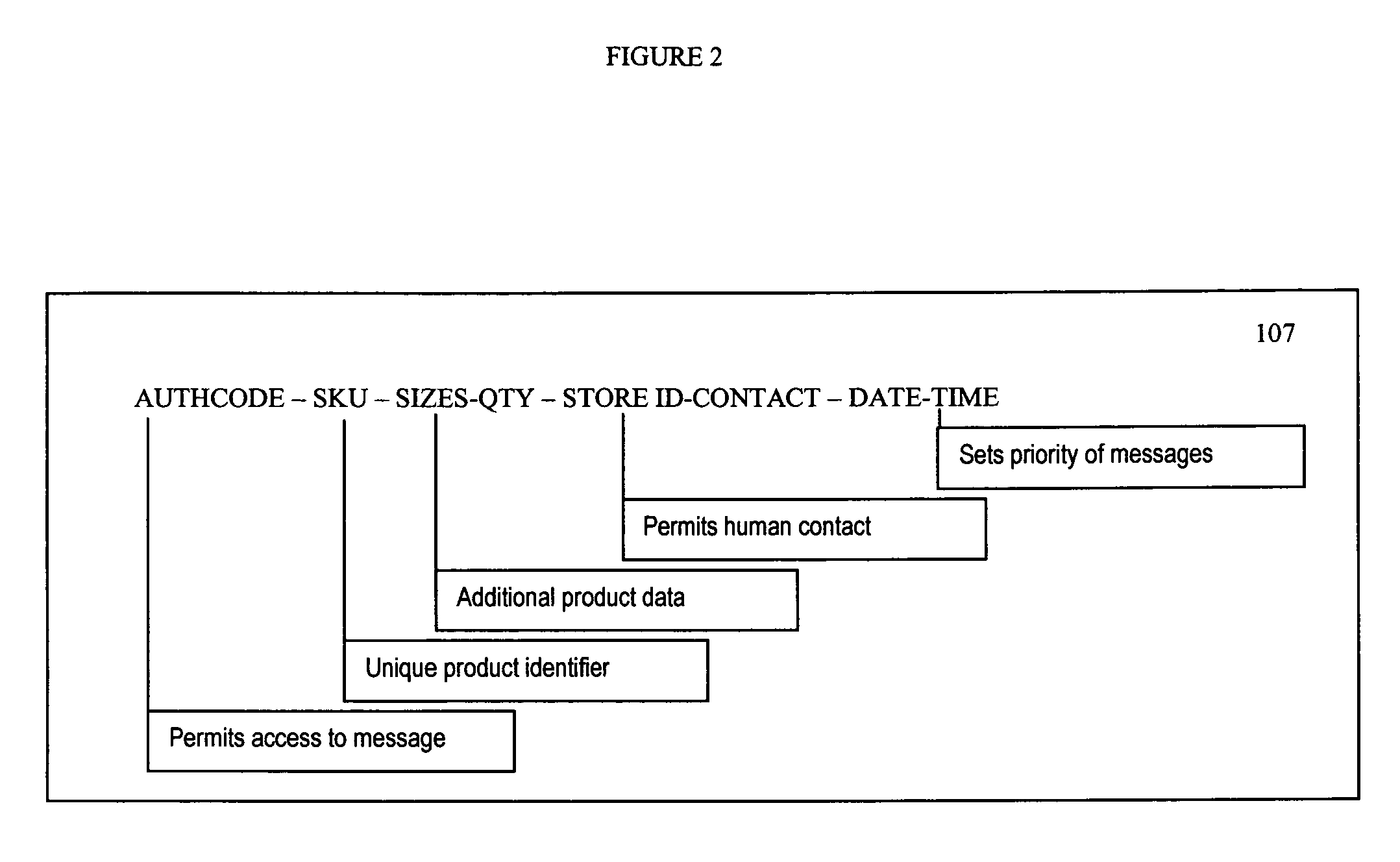Peer-to-peer inventory management system
a technology of inventory management and peer-to-peer, applied in the direction of instruments, digital computers, computing, etc., can solve the problems of not being able to manage inventory, not being able to patent inventory, and significantly reducing the profit of retailers, so as to improve the cost-effectiveness and therefore the profitability of business segments
- Summary
- Abstract
- Description
- Claims
- Application Information
AI Technical Summary
Benefits of technology
Problems solved by technology
Method used
Image
Examples
example 1
[0082] Node 12 has a surplus of 24 pairs of shoes identified as SKU #23456789 (distribution of which is protected / defended by the manufacturer), which retail at $100 and wholesale at $40. Node 14 has a corresponding deficiency, but neither node knows of the other and they are located in different countries, FIG. 1. In this example, the identities of the at least two nodes 102 are kept private so that the PTPIMS 100 manager can realize a business objective by charging a transaction fee.
[0083] Here, each software module includes a unique authorization code for product in the inventory database, FIG. 4. A vendor qualifies the node for certain inventory transactions by a sales representative upon periodic visits. The software module of node 12 has been authorized for inventory transactions of shoes with SKU #23456789 whereby the SKU is a series of numbers with information including size, color, type, retail price, wholesale price, product description, model number, style number, invent...
example 2
[0092] Node 12 has a surplus of 24 pairs of shoes identified as SKU #23456789 (distribution of which is protected / defended by the manufacturer), which retail at $100 and wholesale at $40. Node 14 has a corresponding deficiency, but neither node knows of the other and they are 1000 miles apart. In this example, the identities of the at least two nodes 102 are kept private so that the PTPIMS 100 manager can realize a business objective by charging a transaction fee.
[0093] In this example, each software module includes a unique code authorization for product in the inventory database, FIG. 4. Here, a vendor qualifies the node for certain inventory transactions by a sales representative upon periodic visits. The software module of node 12 has been authorized for inventory transactions of shoes with SKU #23456789 whereby the SKU is a series of numbers with information including size, color, type, retail price, wholesale price, product description, model number, style number, inventory n...
example 3
[0102] Node 12 has a surplus of 100 electronic parts identified as SKU #23456789 (distribution of which is protected / defended by the manufacturer), which retail at $200 and wholesale at $50. Node 14 has a corresponding deficiency of 50 electronic parts and node 16 has a corresponding deficiency of 150 electronic parts. Neither node knows of each other and they are located on different continents. In this example, the identities of the at least two nodes 102 are made public as the nodes pay a membership fee to browse and list inventory on PTPIMS 100.
[0103] In this example, each software module includes a unique code authorization for product in the inventory database, FIG. 4. Here, a vendor qualifies the node for certain inventory transactions via periodic encrypted e-mails that are either manually or automatically entered into the database of the software module.
[0104] Here, the software module of node 12 has been authorized for inventory transactions of shoes with SKU #23456789 w...
PUM
 Login to View More
Login to View More Abstract
Description
Claims
Application Information
 Login to View More
Login to View More - R&D
- Intellectual Property
- Life Sciences
- Materials
- Tech Scout
- Unparalleled Data Quality
- Higher Quality Content
- 60% Fewer Hallucinations
Browse by: Latest US Patents, China's latest patents, Technical Efficacy Thesaurus, Application Domain, Technology Topic, Popular Technical Reports.
© 2025 PatSnap. All rights reserved.Legal|Privacy policy|Modern Slavery Act Transparency Statement|Sitemap|About US| Contact US: help@patsnap.com



